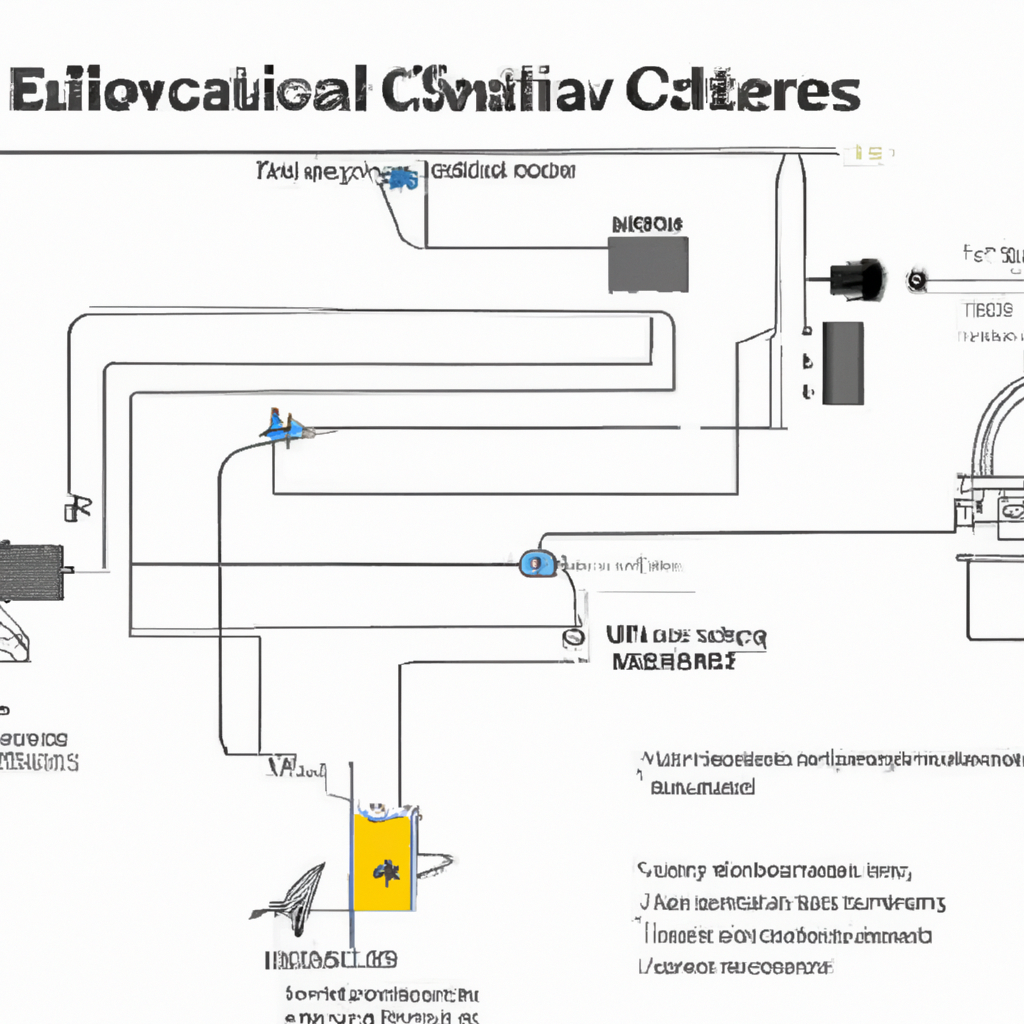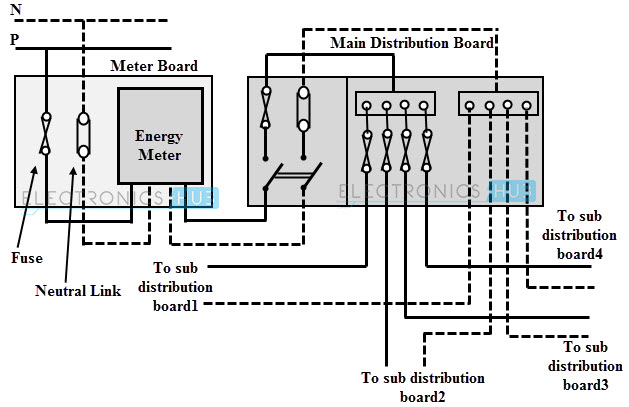In the fascinating world of electrical engineering, there exists a myriad of diagrams that play an integral role in understanding and designing intricate electrical systems. From the universally recognized schematic diagrams to the lesser-known block diagrams and wiring diagrams, each type serves a unique purpose in visualizing the flow of electrical currents and connections. In this article, we’ll explore the various types of electrical diagrams, shedding light on their individual functionalities and how they contribute to shaping our electrified world. So, fasten your seatbelt and get ready for a captivating journey through the realm of electrical diagrams.
Types of Electrical Diagrams
Electrical diagrams are essential tools used in various industries to represent the electrical connections and circuits of a system. These diagrams serve as visual representations that help engineers, technicians, and electricians understand and troubleshoot electrical systems effectively. There are several types of electrical diagrams, each with its own unique purpose and components. In this article, we will explore the different types of electrical diagrams and delve into their definitions, purposes, components, symbols, advantages, and disadvantages.
Schematic Diagram
Definition
A schematic diagram is a graphical representation of an electrical circuit using standardized symbols. It illustrates the connections between various components in the circuit and demonstrates how the electrical system functions.
Purpose
The purpose of a schematic diagram is to provide a concise and clear overview of the circuit design. It helps in understanding the relationships between different components, their arrangement, and how they work together to achieve a specific electrical function.
Components
The components of a schematic diagram include power sources, resistors, capacitors, inductors, transformers, switches, and other electrical devices or elements present in the circuit.
Symbols
Schematic diagrams use standardized symbols to represent the various components and devices in the circuit. These symbols simplify the representation and allow for easy interpretation of the diagram.
Advantages
- Provides an organized and systematic representation of the circuit.
- Easy to understand and interpret, even for those unfamiliar with the specific circuit.
- Enables efficient troubleshooting and debugging of electrical systems.
Disadvantages
- May not capture the physical layout or arrangement of components.
- Requires prior knowledge of electrical symbols and their meanings.
Wiring Diagram
Definition
A wiring diagram is a detailed visual representation of the electrical connections and wiring layout of a system or device. It illustrates the physical arrangement of wires, their paths, and connections between various components.
Purpose
The primary purpose of a wiring diagram is to demonstrate the wiring configuration and connections in a clear and comprehensible manner. It aids in the installation and maintenance of electrical systems by providing a visual guide for wiring procedures.
Components
The components in a wiring diagram include wires, switches, outlets, light fixtures, electrical panels, and any other devices or components that involve electrical connections.
Symbols
Wiring diagrams utilize symbols to represent different electrical components and their connections. These symbols help in understanding the wiring layout efficiently.
Advantages
- Provides a detailed and accurate representation of the physical wiring layout.
- Facilitates proper installation and maintenance of electrical systems.
- Aids in troubleshooting and identifying potential wiring issues.
Disadvantages
- May not include specific details about the actual devices or components connected to the wiring.
- Requires a good understanding of electrical symbols and wiring practices.
Line Diagram
Definition
A line diagram, also known as a single-line diagram or one-line diagram, is a simplified and concise representation of an electrical circuit. It uses lines and standardized symbols to depict the connections between components without including physical details or wiring layouts.
Purpose
The purpose of a line diagram is to provide an overview of the circuit’s electrical connections in a simple and easy-to-understand format. It is commonly used for large-scale electrical systems, such as power distribution networks.
Components
Line diagrams represent various components present in the circuit, such as generators, transformers, circuit breakers, switches, motors, and major electrical equipment.
Symbols
The symbols used in line diagrams represent different types of electrical equipment and devices, enabling a quick understanding of the circuit’s structure.
Advantages
- Provides a clear and concise representation of the electrical connections.
- Simplifies complex electrical systems, making them easier to comprehend.
- Enables effective communication and documentation of large-scale electrical networks.
Disadvantages
- Does not convey the physical arrangement or wiring details of the system.
- May not include all components in the circuit, focusing only on the major ones.
Block Diagram
Definition
A block diagram is a visual representation that illustrates the functional relationships between different components of a system or process. In electrical diagrams, it represents the flow of signals or information within an electrical system rather than the physical connections.
Purpose
The purpose of a block diagram is to present a high-level overview of the system’s functionality and structure. It helps in understanding the interactions between different components and their contributions to the overall system.
Components
Block diagrams display different blocks or functional units within the system, representing the major components or subsystems involved.
Symbols
The symbols used in block diagrams may vary depending on the specific system being represented. However, they typically consist of geometric shapes or boxes representing the functional units or components.
Advantages
- Provides a simplified representation of system functionality and structure.
- Highlights the major components or subsystems involved.
- Facilitates system analysis and design.
Disadvantages
- Does not capture the physical or detailed connections between components.
- May oversimplify the system, leading to potential misunderstandings.
Circuit Diagram
Definition
A circuit diagram, also known as an electrical schematic or electronic diagram, is a visual representation of an electrical circuit that illustrates the connections and components in detail.
Purpose
The purpose of a circuit diagram is to provide a detailed understanding of the circuit’s electrical connections, component layout, and overall functionality. It helps in designing, analyzing, and troubleshooting electrical circuits.
Components
Circuit diagrams represent the complete set of components and connections present in the circuit, including power sources, resistors, capacitors, inductors, transistors, integrated circuits, and other electronic devices.
Symbols
Circuit diagrams utilize standardized symbols to represent various electronic components accurately. These symbols help in identifying and understanding the function of each component.
Advantages
- Provides a comprehensive representation of the circuit’s connections and components.
- Facilitates effective circuit design, analysis, and troubleshooting.
- Allows for clear communication and documentation of electronic systems.
Disadvantages
- Requires a good understanding of circuit symbols and their meanings.
- May become complex for large and intricate circuits.
Logic Diagram
Definition
A logic diagram is a graphical representation of Boolean logic or digital logic circuits. It uses logic gates and symbols to illustrate the logical relationship between different inputs and outputs.
Purpose
The purpose of a logic diagram is to demonstrate the logical operations and connections within a digital system. It aids in understanding the flow of signals and the logical behavior of the system.
Components
Logic diagrams consist of logic gates, such as AND gates, OR gates, NOT gates, and various flip-flops, illustrating the components involved in the digital logic circuit.
Symbols
The symbols used in logic diagrams represent logic gates, input signals, output signals, and other elements specific to digital circuit design.
Advantages
- Allows for visualization of logical operations and relationships.
- Facilitates the design and analysis of digital logic circuits.
- Helps in understanding the functionality of complex digital systems.
Disadvantages
- May not represent the physical connections or layout of the circuit.
- Requires knowledge of Boolean logic and digital circuit design principles.
Pictorial Diagram
Definition
A pictorial diagram, also known as a pictorial representation or pictorial chart, is a visual depiction of a system or object using realistic or graphical illustrations.
Purpose
The purpose of a pictorial diagram is to provide a visual representation of the system or object, emphasizing its physical appearance and characteristics. It offers a clearer understanding by using realistic or graphical illustrations.
Components
Pictorial diagrams represent the various components or elements of the system or object, showcasing their physical appearance and arrangement.
Symbols
In pictorial diagrams, symbols may not be used extensively as the focus is on realistic or graphical illustrations rather than standardized symbols.
Advantages
- Provides a realistic and intuitive representation of the system or object.
- Emphasizes the physical appearance and arrangement of components.
- Facilitates easy comprehension, especially for non-technical individuals.
Disadvantages
- May not accurately represent the electrical connections or circuit details.
- Limited use of standardized symbols may lead to potential misunderstandings.

Single Line Diagram
Definition
A single line diagram, also referred to as a one-line diagram, is a simplified representation of an electrical circuit using a single line to connect and represent the various components.
Purpose
The purpose of a single line diagram is to provide a straightforward overview of the circuit’s electrical connections without including specific physical details. It aids in understanding the arrangement and relationships between different components.
Components
Single line diagrams represent the major components, such as generators, transformers, circuit breakers, switches, and equipment, involved in the electrical circuit.
Symbols
In single line diagrams, symbols are simplified and standardized to represent different electrical components and devices.
Advantages
- Offers a simplified and easy-to-understand representation of the circuit.
- Enables quick comprehension of the electrical connections and components.
- Facilitates efficient system analysis and planning.
Disadvantages
- Does not provide the physical layout or wiring configuration of the circuit.
- May not include intricate details or connections in complex systems.
Electronic Schematics
Definition
An electronic schematic, often referred to as an electrical schematic or circuit diagram, is a detailed representation of an electronic circuit using standardized symbols.
Purpose
The purpose of an electronic schematic is to provide a comprehensive and detailed understanding of the electronic circuit’s design, components, and electrical connections. It aids in circuit analysis, troubleshooting, and design modifications.
Components
Electronic schematics represent all the electronic components, such as integrated circuits, transistors, resistors, capacitors, and other devices, involved in the circuit.
Symbols
Electronic schematics utilize standardized symbols to represent different electronic components accurately. These symbols ensure consistent interpretation and understanding.
Advantages
- Provides a precise and detailed representation of the electronic circuit.
- Enables comprehensive circuit analysis, troubleshooting, and modification.
- Facilitates effective communication and documentation of electronic designs.
Disadvantages
- Requires a good understanding of electronic symbols and circuit design principles.
- Can become complex and overwhelming for intricate circuits.
In conclusion, electrical diagrams are crucial tools that assist in understanding, designing, and troubleshooting various electrical systems. Each type of diagram serves a specific purpose and offers unique advantages and disadvantages. Whether you are an engineer, technician, or electrician, having a solid grasp of these different types of electrical diagrams will undoubtedly enhance your ability to work with electrical systems efficiently and effectively.




